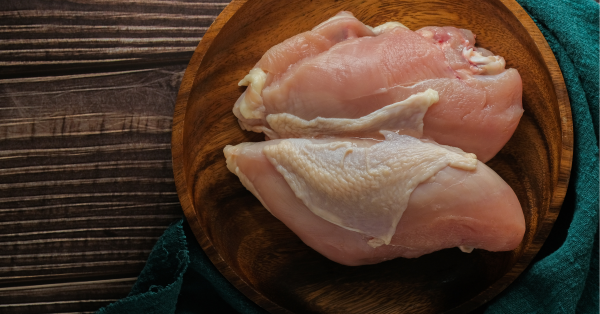GASTROENTERITIS CASES SPIKE AS AUCKLAND HITS SUMMER
24.12.2021

New data from Auckland Regional Public Health Service (ARPHS) shows cases of gastroenteritis illnesses, such as Campylobacter and Salmonella, are increasing rapidly in the Auckland region this summer.
These illnesses are most commonly caused by contaminated food and water, and thrive in warmer temperatures. About half of all cases of Campylobacter are linked to chickens, which carry the bug in their gut and faeces.
ARPHS is currently being notified of more than 100 cases per week of gastroenteritis illnesses in the Auckland region. While numbers often spike in summer, ARPHS has seen a particularly rapid increase in Campylobacter, with numbers more than doubling in just the last two weeks.
Dr Jay Harrower from Auckland Regional Public Health Service commented:
“While these illnesses can be very serious, there are ways to reduce your risk of getting them. Most importantly chill, prepare and cover poultry properly: store it in containers, keep it chilled, defrost it thoroughly, keep it separate, cook it fully, and wash your hands regularly when preparing it. And avoid the common mistake of washing raw chicken – it’s a recipe for spreading and spraying the nasty bugs!”
New Zealand has one of the highest rates of Campylobacter infection worldwide. Between 6,000 and 7,000 people are diagnosed with the infection each year according to National Episurv data, while it’s estimated thousands more are affected but do not seek medical help.
Symptoms of Campylobacter can include stomach cramps, diarrhoea and vomiting, and these can last for a week or longer. Around 500 people are hospitalised each year as a result of the infection. While the vast majority of cases recover in full, in rare instances the infection can lead to Guillain-Barre syndrome. This is a disorder in which the body's immune system attacks its nerves, sometimes resulting in permanent paralysis.
To reduce the risk of getting gastroenteritis illnesses, NZ Food Safety recommends 10 top tips for kiwis:
- Keep raw meat and poultry covered, and store it away from ready-to-eat food, fruit, and vegetables.
- Store raw meat at the bottom of the fridge to stop leaking juices – which can contain live bacteria – dripping onto other foods.
- Store meat in containers to catch any juices and save unnecessary cleaning up.
- Wash hands with soap and hot water before and after handling raw meat.
- Use a separate chopping board for raw meat.
- Completely defrost meat before cooking to make sure it cooks evenly. Ensure raw meat juices do not drip onto other foods.
- Do not wash meat before cooking. Washing creates puddles and sprays that spread bacteria around the kitchen.
- Cook meat, especially poultry, thoroughly until juices run clear.
- Never return cooked meat to the dish or board that held raw meat.
- Do not serve with utensils used on raw meat.
While gastroenteritis illnesses are most commonly spread by food, cases also occur when people swim in contaminated water. This is why it’s important to check Safeswim every time you head to the beach, to make sure it’s safe before you go for a dip: www.safeswim.org.nz.
For more information on Campylobacter visit www.arphs.health.nz/public-health-topics/disease-and-illness/campylobacter/
For more information on food safety visit www.mpi.govt.nz/food-safety-home/preparing-and-storing-food-safely-at-home/clean-cook-chill/
For media enquiries contact arphsmedia [@] adhb.govt.nz.
For health advice call Healthline for free anytime on 0800 611 116
News
- All
- Alcohol
- Alert
- COVID-19
- Dengue fever
- Foodborne illness
- Healthy Auckland Together
-
Measles
- Measles case on flights between Auc…
- Measles case on Samoa to Auckland f…
- Check you’re immune to measles befo…
- Measles case on Samoa to Auckland f…
- Measles case on Fiji to Auckland fl…
- Measles cases on two Samoa to Auckl…
- Measles case on Samoa to Auckland f…
- Measles case on Samoa to Auckland f…
- To view more click here
- Meningococcal
- Mumps
- News
- Resources and surveillance
- Smokefree
- Travelling
- Whooping cough